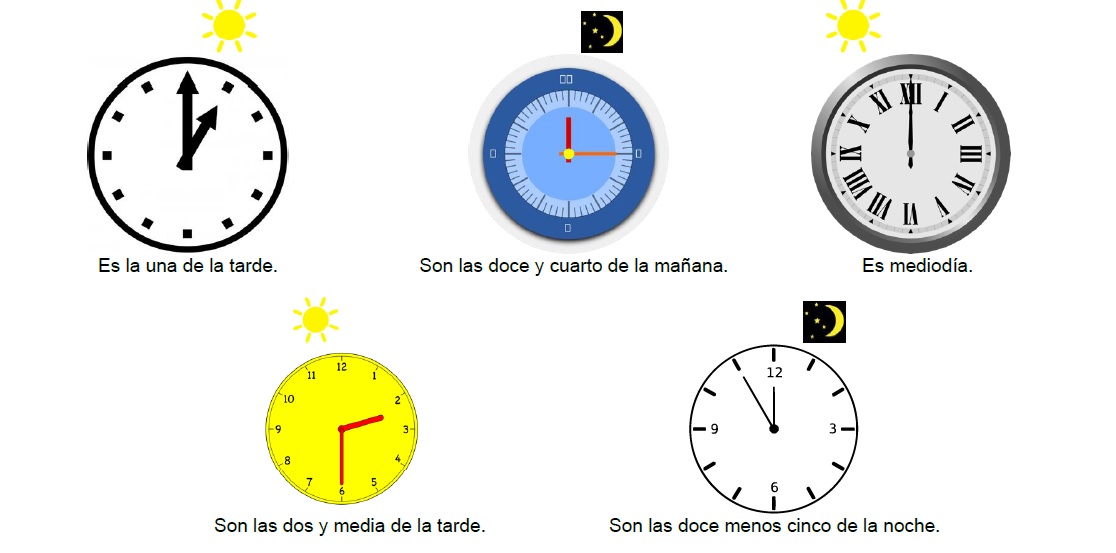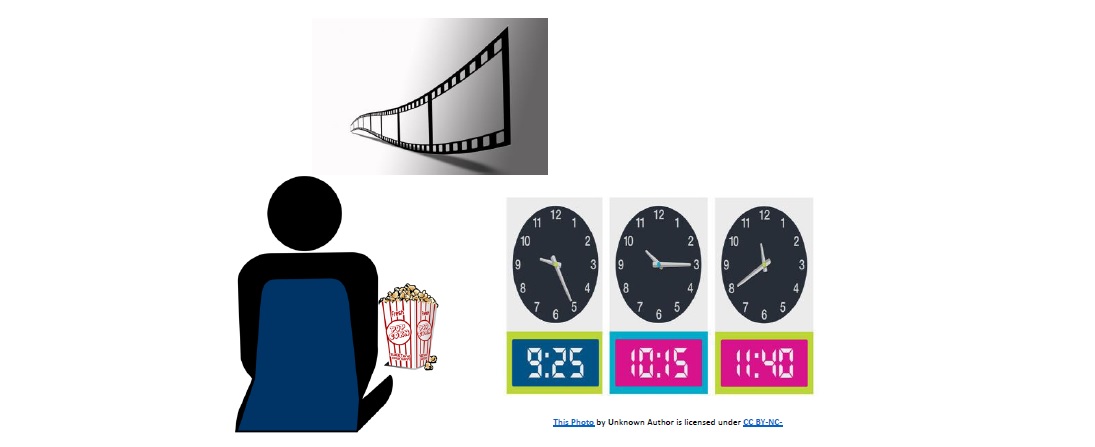Telling the time with the verb "ser"
¿Qué hora es?

The clock above shows the different use of "y" and "menos" depending on where the minute hand is on the clock. "Y" is used for the first 30 minutes, and "menos" is used after that. Moreover, the word "cuarto" is used to indicate 15 minutes, and the word "media" to indicate thirty minutes. Lastly, "en punto" is used when the minute hand is on the twelve, as the translation to the English "o'clock".

To tell the time
- The verb "ser" is used to express what time it is. To say "o'clock" use "en punto".
- "La hora" is feminine, therefore, when using "1", say "Es la una" or "Es la una y..." or "Es la una menos..."
- Starting from "2-12", use "Son las dos, tres, cuatro... doce"
- The arrows show that minutes 1-30 passed the hour is expressed by using "y".
- The arrows also show that minutes 31-59 before the hour is expressed by using " next hour + menos + minutes".
- Instead of using 15 (on either side of the clock), use "cuarto" (quarter).
- Instead of using 30, use "media" (half).
- 12:00 p.m. (noon) can also be expressed by saying: "Es el mediodía".
- 12:00 a.m. (midnight) can also be expressed by saying: "Es la medianoche".
- "de la mañana", "de la tarde", and "de la noche" are used to expressed specific time.
- "en la mañana" or "por la mañana", "en la tarde" or "por la tarde", and "en la noche" or "por la noche" are used to express general time period.
- In many Spanish speaking countries, "¿Qué horas son?" is also used colloquially.
Other time expressions
- "¿A qué hora es...?" is used to express "at what time an event takes place". This is different than telling the time as it refers to a single event and the verb "ser" will be conjugated in the third-person-singular-form: "¿A qué hora es la clase de español?" "¿A qué hora es la fiesta?"
- To answer the question or to express "at what time an event is", use: "es + a + la/las + hour": "La clase de español es a la una de la tarde." "La fiesta es a las siete de la noche." Note: a + el = al; therefore, when telling that an event takes place at noon: "es al mediodía."
- In daily life, a 12-hour format is usual in the Spanish speaking countries. However, a 24-hour timetable is expressed on transportation itineraries, movie schedules, official events, social invitations. "El tren sale a las 23:35 horas." "La película es a las 14:00 horas."






